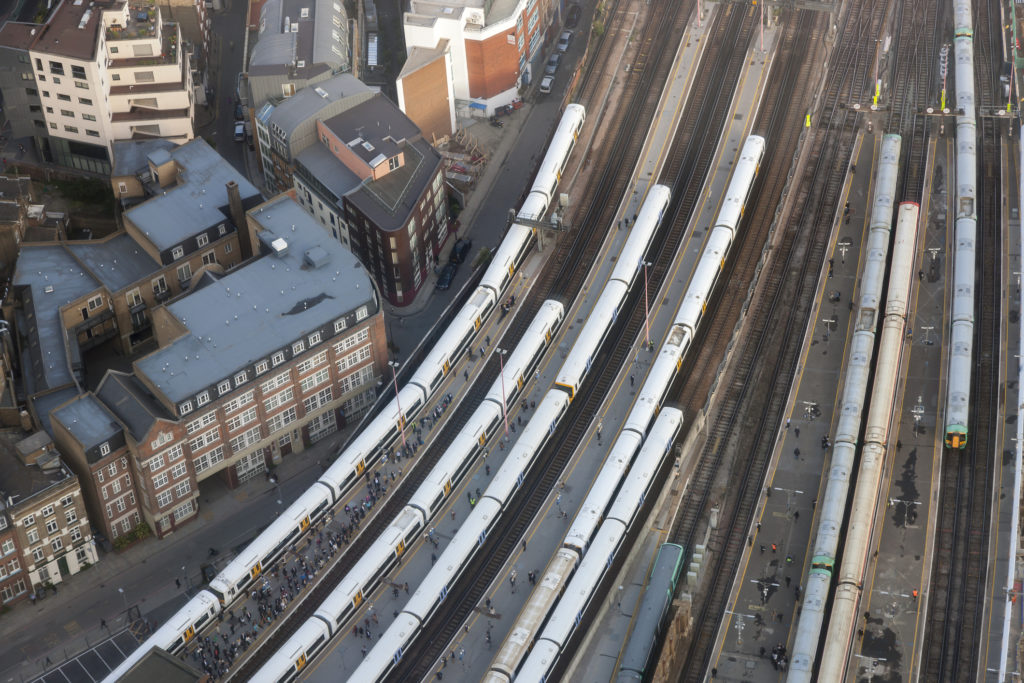A railway is very much a system of systems, with track, structures, earthworks, telecoms, signalling, electrical power, and rolling stock all having vital roles to ensure an effective service is provided for all customers. Good people are obviously at the heart of the railway, but a vital system is an effective timetable.
Timetable planning is not easy. It has to cater for a variety of factors and has to be an acceptable compromise for the many stakeholders and customers of the railway. The factors involved in timetable planning include speed limits, which vary across the network depending on points and bends in the track, and with only one train occupying a given section of track at any time. Signalling infrastructure varies across the network and what is a safe distance between trains at one part of the route can differ at another part.
There has to be a minimum time gap between trains using the same platform at a station, which can vary depending on the type of train and how busy the trains are in terms of passengers leaving and joining the train. Stopping, non-stopping, and freight trains all travel at different speeds, so a mix of these trains on the same route affects the number of trains that can use the route. Electric, diesel, (and steam), passenger, and freight trains all have different performance characteristics and changing the type of train will affect the timetable.
Keeping moving
Trains run more efficiently and use less energy when they keep moving, so we don’t want trains on more than one route arriving at a junction at the same time. Trains can’t be scheduled to run too closely together, because flexibility is needed if there is an incident in order to get trains back on time. Trains need to be taken out of the network for maintenance and re fuelling, so at the end of a timetable path they ideally need to be near to a maintenance depot.
Time for project work to increase capacity, and routine maintenance to keep the network running reliably, also needs to be planned in. Customers want to avoid changing trains and to get to their destination quickly and reliably, so there has to be a compromise of stopping and non-stopping trains on any route.
To some, a timetable may appear to be just a list of times at different locations or lines on a graph. But these are people and goods, and represent the value of rail to society. The timetable is the product and promise that rail delivers to its customers, and the sum of the whole railway system distilled into times and locations. It is also the result of a set of operator and stakeholder requirements taking into account what the network system is capable of delivering. It’s what train performance is measured against, which is important to engaging with and providing customer satisfaction and attracting more customers.
The timetable is also a tool, with evidence benefits, disbenefits, and trade-offs, and is formed from meaningful discussions with funders and stakeholders. It’s the reason many investment projects are funded and delivered to provide an enhanced reliable product, or a new high-performance product for customers. Timetable and performance modelling is key to understanding, quantifying, evidencing, and assuring that the benefits for customers of any project are delivered.

The risk of change
A new timetable is a change, and any change is a risk. If not implemented correctly and not taking into account all the factors involved, a timetable change can be a major issue. This was the case in May 2018, when a new timetable was introduced for large parts of the rail network. This caused major disruption to services for customers, especially in the North of England and in the South East.
The subsequent inquiry found that there were systemic weaknesses in the planning and delivery of the new timetable.
The May 2018 timetable followed major investment in large infrastructure projects and delivery of new rolling stock to introduce thousands of new services. In the North of England, brand new trains, including more than 500 new carriages, with room for 40,000 extra passengers and more than 2,800 extra services a week were planned. In London and the South, the changes were intended to deliver around 70% of the capacity benefits of the Thameslink Programme, and to facilitate ‘tube-like’ service frequencies, with trains every two or three minutes.
The scale of investment and complexity of introducing new services meant that the change planned for May 2018 was unprecedented in scale. It would have complex effects across multiple franchises and very large portions of the national rail network. It involved 42,300 individual changes, affecting 46% of all passenger services and the timetable change of May 2018 was around four times the scale of a typical six-monthly timetable change.
The inquiry found that different projects and processes were inter-dependent, which meant that risks and delays arising in one area were quickly passed to others. The risks first emerged in delays to the planning and delivery of the North West Electrification Programme, combined with late changes to the scope of the Thameslink Programme, compressing the time available to develop the timetable and then further compressing the time left available for train operating companies to prepare for the implementation of new services.
May 2018
In the autumn of 2017, as the North West electrification schemes fell behind schedule, a high-risk decision was taken to catch up the work over Christmas 2017 and, around the same time, a decision was taken to re-plan the introduction of the new Thameslink services. The Christmas works were not completed, and the re-planning of the Thameslink services proved to be more complex than expected. The timetable process began to fail because the volume of changes required was too great and late in the timetable development programme to be reasonably manageable.
The scale and impact of the problems came to a head with the introduction of the May 2018 timetable. In the following weeks, Govia Thameslink Railway (GTR) the operator covering much of London and the South, failed to run about 470 (12%) of its planned daily services. Arriva Rail North, which operated rail services across the whole of the north of England, failed to run approximately 310 (11%) of its planned 2,810 services per weekday.
The inquiry found that failures to identify these risks and properly manage them were attributable to Network Rail, train operators, the Department for Transport (DfT), and the Office of Rail and Road (ORR). It found Network Rail was in the best position to understand and manage the risks, but did not take sufficient action. Neither train operator Northern or GTR were properly aware of or prepared for the problems in delivering the timetable.
Much has been learned and put in place to improve timetable planning as a result of the May 2018 timetable “fiasco” − as Sir Peter Hendy has described it − including the proposed creation of Great British Railways. However, with new managers joining the industry all the time and new innovative and creative processes being introduced (which are vital for the future of the industry) it is important that the lessons learned from the May 2018 timetable incident are not forgotten.
Timetable foundation
Douglas Rarity, programme manager strategy and investment, Network Rail recently gave a presentation to the IRSE in Scotland called ‘Timetable Led Project Development and Benefits Realisation’. Douglas explained that the timetable is the core product rail provides to its customers and the quality of the timetable will be one of the reasons customers choose rail over other modes of transport.
Signalling, line speeds, type of train, train length, and stopping patterns all form the foundation of the timetable, which also has to take into account the Sectional Running Times (SRT), the time taken for a particular train to traverse a network link. The headway is the minimum time interval between two successive train schedules at a specific timing point on the same line in the same direction. A junction margin is the minimum permissible time interval between two trains that are performing conflicting moves at a timing point.
Booth the headway and junction margin have to be such that the second train on the route can also meet its SRT. To make things even more complicated; operator service requirements, passenger dwell times, train crew rules, train loop lengths, platform lengths, turnaround times, engineering allowances, and train gauge all have to be carefully considered and taken into account when developing a new timetable.

‘Failing to plan is the same as planning to fail, this commonly used expression is no better expressed in the rail timetable plan. The timetable is the glue which holds the structure of train operations together. If the running time data is incorrect or the train planning margins are not calculated accurately then the plan starts to fall apart. Several big lessons have been learnt in recent years on how a timetable should be planned accurately and use of technology is becoming a much bigger tool in the development of an accurate timetable plan.’ Andy Pepworth, Capacity Planning Manager, D2 Rail
Enhancements
For any track or signalling project enhancement, the timetable is the output, benefit point, and ultimate product. The enhancement should ideally be planned when it is necessary to renew track, signalling (and traction current supply if applicable) due to asset condition. The development of the enhancement should start with the timetable output, which must remain a constant thread and a benefit checker throughout the project lifecycle. If it is not necessary to renew the track and signalling then a timetable solution by changing some of the other factors involved with the timetable should be first evaluated.
Enhancements can also be made to rolling stock, such as the increase in top speed from 100mph to 110mph on the Siemens Desiro EMUs running out of Euston which allowed an additional path in the timetable on the fast lines. Electrification also offers significant benefits by, for example, providing more powerful electric trains which reduce the performance differential between passenger and freight services. In Scotland, a key justification for electrifying the line to Stirling was to avoid Stirling-bound diesel trains delaying electric Edinburgh to Glasgow trains.
Multiple timetable scenarios based on a train service requirement which isn’t possible with the current infrastructure, rolling stock, or both, should be evaluated. These scenarios can then be used to deliver the train service requirement resiliently, which is important. This can then be used to quantify and demonstrate the benefits to customers, in terms of journey times and number of trains paths, and to facilitate working with customers to identify ‘trade-offs’ early in the development.
This also allows output-based decisions to be made on the engineering interventions to take forward, in conjunction with market data to determine the appropriate level of enhancement. Evidencing the reason why asset enhancements are required, where and how they will work together, and exploring the options between different timetables to reach the best engineering solution that can be implemented. It may also be that a case can be made to demonstrate an engineering enhancement is not required, by challenging perceptions and assumptions to ensure the best value and maximum benefit is delivered, by identifying when and where something is needed.
Timetable led development case study
In conjunction with Project Acceleration in a Controlled Environment (PACE), good timetable development allows the initial work to be delivered quickly in order to inform infrastructure requirements before design work commences. It also prevents multiple infrastructure interventions from being superfluously designed, and enables an assurance process to check the various enhancement work types will work together as a system to deliver the outputs and benefits of an overall enhancement project.
Douglas explained a case study for timetable and infrastructure developments for the Aberdeen to Central Belt in Scotland. The challenge was to reduce inter-city express journey times from Aberdeen to/from Edinburgh by 20 minutes, Glasgow by nine minutes, and Dundee by three minutes, together with additional stopping passenger train and freight trains, and with improved connectivity for customers at stations between Dundee and Aberdeen.
Working collaboratively with all the operators concerned, four timetables were created to identify where timetables worked and didn’t work, along with identifying the evidence why they didn’t meet the service specification, and to identify the required performance resilience enhancements. This took into account the journey opportunities per hour, connection times, freight paths per hour including the length of freight trains, and journey times.
Average journey times of 62mph for passenger trains compared to 39mph for freight trains presented an overtaking challenge and a requirement to ensure adequate passing loops were provided. Service interaction and connections at Dundee to take into account stopping and non-stopping trains was another challenge; together with trains terminating and starting their journeys at the station.
The results of the timetable modelling were the identification of a number of proposed signalling enhancements, freight loops, and other infrastructure enhancements, including additional platforms, bi-directional signalling and a junction reconfiguration at Aberdeen, freight gauging, and some platform extensions at other stations.
This resulted in a plan to improve journey times to/from Aberdeen, with potential additional benefits to customers north of Aberdeen; improve connectivity for North East passengers with barriers of through travel on the corridor removed; additional passenger services providing additional travel options and flexibility for customers; additional freight services with the potential for the South Aberdeen Harbour development; and improve through service provision with additional pathing at Aberdeen for through services, together with new station provision south of Aberdeen. The modelling also provided input into Nestrans. This is the Transport Partnership for Aberdeen City and Shire, the purpose of which is to develop and deliver a long-term regional transport strategy and take forward strategic transport improvements in the area.

Benefits to date and next steps
Completion of the early development timetable-led accelerated internal development for the project has been much faster than historic norms (circa 15 months against historic norms of up to 48 months) and the cost of work done to date is less than 2% of anticipated final cost against a benchmark of 10%.
The project has also been part of a whole line of route approach, considering the way to minimise disruption to passengers and freight. This has generated efficiencies from shared survey work and creates a major opportunity for potential scope and delivery efficiencies from incremental benefits, shared resources, and minimised disruptive access.
Next steps for the project will be to work collaboratively with ScotRail to better understand the effect of the proposed loops and to look at an all-day 2026 timetable with LNER services and current freight as well as passenger services in the Central Belt. The Scottish government has set a target to decarbonise domestic passenger rail services by 2035 and the Aberdeen to Central Route by 2030. The modelling only considered a diesel railway, so both a diesel and fully-electrified timetable will be evaluated to compare infrastructure requirements and service provision.
Scottish government policy is to also encourage more freight off the road and on to the railway, lowering carbon emissions, driving economic growth and easing congestion. The 2026 enhancement will deliver additional opportunities for freight services to run, but the planned 2026 enhancement must also enable the likely growth in the freight market and the impact of any subsequent electrification of the line. The project outputs and costs also need to be proportionate to reflect changes to passenger behaviours and levels of demand post Covid-19, whilst meeting political priorities and anticipating future recovery.
Industry Timetable Technical Strategy
The Industry Timetable Technical Strategy sets out how the industry will get more out of new technology to produce timetables. The amount of changes now being made as a result of investment in infrastructure, rolling stock, and new services can create challenges, as was the case highlighted by the disruption in May 2018.
Unintegrated timetable technology that requires high levels of manual intervention is still widely used. Although there has been progress in technology, the developments have not been coordinated across the industry as part of an integrated system. This means timetable production is often slow and published timetables contain conflicts that can affect train performance.
The industry has responded to the Covid-19 pandemic by making four major timetable changes, re-planned the December 2020 timetable, and seen a significant increase in short term/weekly timetable changes, using the existing technology. However, more integrated and intelligent technology will support the industry to quickly and accurately deliver significant timetable changes, as well as help to manage risks that may arise during the process.
Several new strategic priorities have been identified, including the utilisation of current technologies through to introducing automated conflict detection functionality. An important long-term strategic priority is the transition to the target end state − an integrated set of compatible planning applications and processes (the integrated system).
Implementation will require significant effort and commitment by the whole industry. Change cannot be delivered without ongoing collaboration and transparent cooperation, and an industry timetable portfolio board has been established to provide pan-industry leadership of this major change.
Rail Engineer would like to thank Douglas Rarity for his help and assistance with this article.
Image credit: istockphoto.com


